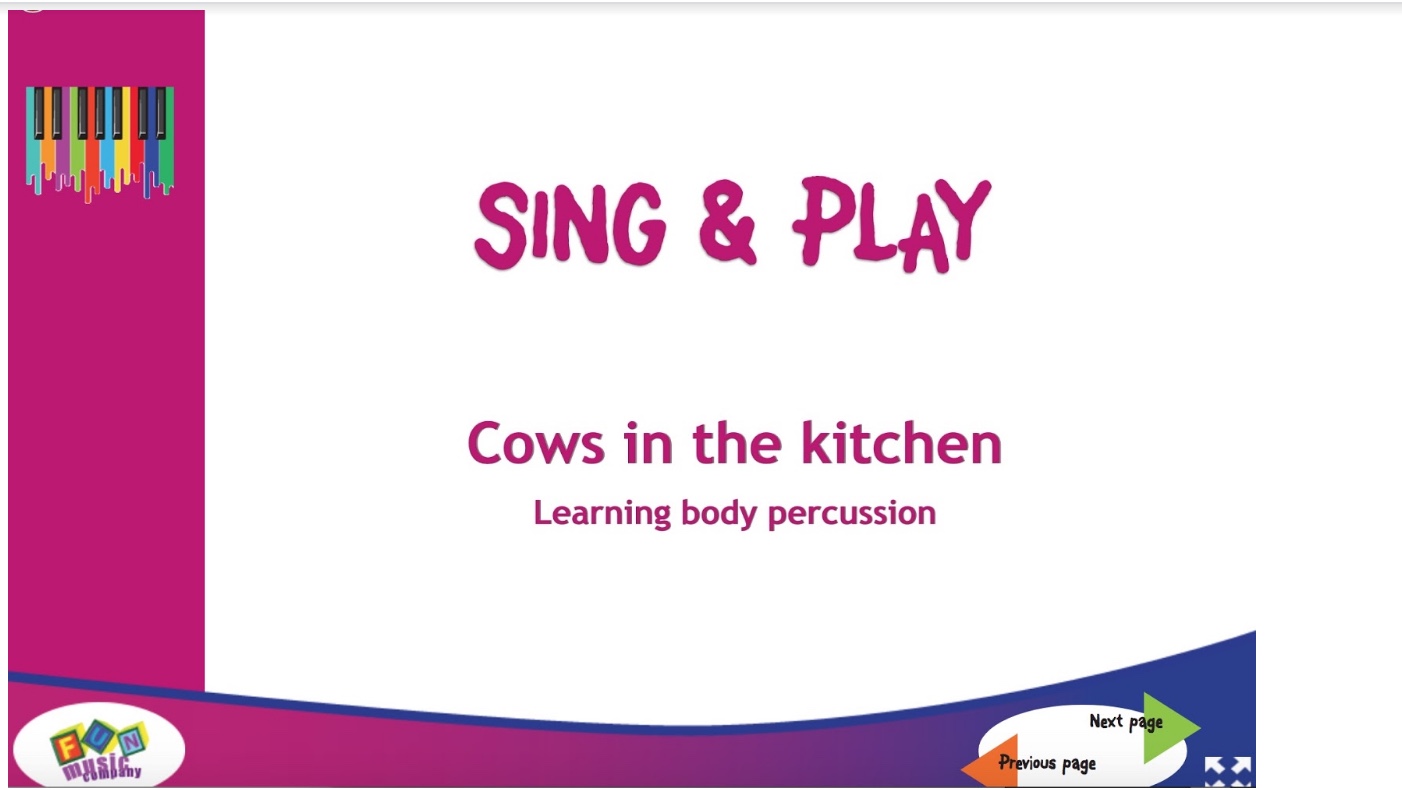Have you ever wondered how to start with your music lessons? Do you start with playing instruments, planning, writing, reading, … etc?
In this curriculum training session, I will help you learn the steps to build your primary or elementary music lesson plan and make it EASY and FAST to implement with your classes.
Anybody can read and follow a basic recipe, right?
It’s a universal language.
…which is exactly why we created The Fun Music Curriculum.
In this training video starting at Kindergarten level, I’ll show you the core basics and STRATEGY behind how to get children singing then playing effortlessly in just a few easy steps.. (Think of this as laying the solid groundwork for any grade)
Step 1: Watch this introductory video of the song and learn the words and actions to the song.
In this video, watch how your students can learn the words and actions for an entire song in just a few minutes.
The music is written and it’s playing in the background, but we don’t even mention it in the video. It’s simply there in the background so it becomes a “normal” part of music lessons. The children are learning it by exposure which means they have it around them or they can see it, so they have contact with the music writing without having to read or understand it yet.
Images are also provided on the screen to help the children remember the words.
Once you see the inner workings of setting this music lesson up, (which we’ve spent years teaching and researching the steps on how to teach music), you’ll be able to use this system of learning to build into your own teaching using any song to start. No need to reinvent the wheel.
Step 2: Watch this second video to find out how singing can quickly progress into learning rhythms.
When was the last time you had the chance to sit on in a lesson and actually see how a teacher progresses from one activity to learn something new? Never
If you’ve ever been nervous about teaching something new in music, the old and usual piece of advice is “be confident” or “give it a go” – and that doesn’t help much, especially in such stressful situations. So, in the Fun Music Curriculum we decided to give you a level of specificity you cannot find anywhere else.
Like watching how an actual lesson progresses and demonstrating a fairly fast and specific rhythm pattern to fit with the music while making it look easy to even your youngest students.
In this video, you’ll see that musical terms such as names of music notes and rhythms are not even mentioned to the children to achieve the outcome of playing the rhythm. To the children they’re able to do it easily because you’re showing them in a short and fun segment.
This rhythm is later transferred onto specific instruments in the next step, so it is an important step.
In this Fun Music Curriculum sneak peek, watch exactly the steps to make learning a rhythm while singing effortless:
Step 3: Discover how to play TWO instruments with the music by watching this third video.
After watching this video, students will know the steps to be able to play the castanets or tambourines in time with the music and they’ll be able to play along with a backing track.
First you will see how to teach the castanet part – taking the two pats from the rhythm and putting them onto an instrument. Instruments used are only ever a guideline. If you don’t have castanets, you can use woodblocks, claves or any other instrument.
Students should learn the rhythm with body percussion first, before getting out the actual instruments to have the best success in playing. For castanets students can simply tap their fingers with their thumb, pretending to play.
When they can play one part, they can move onto playing the tambourine part and then they can divide into groups to play it as an ensemble.
You’ll find the full PDF for this Fun Music Curriculum lesson plan here.
These videos are just one of many lesson plans for singing and playing instruments in our Fun Music Curriculum that demystify the process of how to start with singing a song and growing it into a full set of playing parts.
As you can see, this material is totally different from anything you’ll find in other programs and it continues to teach music with a consistent format, language style and a proven set of time-tested pedagogies.
If you want more – including how to go from “no idea” to creating lessons for all grades K-5 or K-6 be sure to get started with more free lesson plans for primary or elementary classes here.
I can’t wait for you to start using these plans and for you get the teaching success you deserve with your music classes!





Leave A Comment